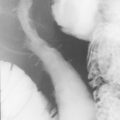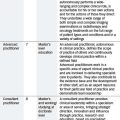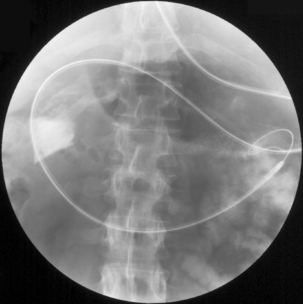CHAPTER 2 Medico-legal aspects of gastrointestinal imaging practice
Introduction
Negligence on the part of the healthcare team, or their employer, can result in a legal claim. Such claims are on the increase (Berlin, 1999; Alderson and Hogg, 2003), possibly because of a greater awareness about compensation being sought from a suboptimal outcome – where the fault lies with another, or possibly because there is a greater awareness of the claims process itself – particularly notable on local radio stations through advertising. Some argue that public expectations of healthcare have been raised to an unrealistic level (Butt, 1998) requiring an increasing emphasis to be placed upon educating the public about realistic expectations. This might be worth considering during your contact with patients during the explanatory and consenting phases.
Within this chapter, we shall explore aspects of clinical negligence associated with imaging and therapy of the GI tract. The general principles outlined are likely to apply to most countries; however, it is important that you familiarize yourself with the legal processes in the country in which you practice, because conceptual and procedural differences will exist. We will not consider the detail of the legal claims process; however, if this interests you we would recommend the article by Alderson and Hogg (2003) which explains the process of a legal claim in English law.
Where might negligence claims arise in GI imaging and therapy?
Table 2.1 offers a number of circumstances where claims might arise.
| Category of claims | Examples |
|---|---|
| Inadequate patient care |
On examining the list in Table 2.1, it becomes clear that the points are representative of unreasonable/poor clinical practice. Alternatively, engaging in reasonable clinical practice (the converse of the above) would improve the patient experience and outcome and also minimize the chance of a legal claim. Reasonable clinical practice, therefore, does not need to have a purely litigious basis; its basis would build on reasonable standards of care and management that are expected of highly skilled and educated practitioners.
How does your patient succeed with a (legal) negligence claim?
Duty of care
Following a prescribed legal format, the claimant (e.g. your patient) alleges there has been personal injury (or even death). To be successful the claimant needs to establish that:
Let us consider the duty of care. It is fair to assume that healthcare workers have a duty of care towards their patients and typically this is made explicit by professional and regulatory bodies such as the UK Society and College of Radiographers. Statement 3 for professional conduct from the Society and College of Radiographers (2002) indicates:
Adding weight to this, the radiographers’ regulatory body indicates that radiographers must…
In the case of a radiographer, duty of care is easy for the claimant to establish – the only exception is where the fetus is involved. In English law, the fetus does not have a duty of care associated with it. However, if it is born alive and has sustained harm as a result of a breach of duty owed to its mother then it will be able to make a claim (Alderson and Hogg, 2003).
Breach of duty
Having understood how duty of care is established, we shall now determine how a decision is made about a breach of duty. Deciding whether there has been a breach of duty necessitates an understanding of the standard of care to be expected. This is achieved in the UK by applying the principles of Bolam v Friern Hospital Management Committee (1957), with due regard to Bolitho v City of Hackney Health Authority (1997). Invariably this is often described as ‘the Bolam test’. Here, for any given clinical situation, the healthcare worker would be expected to act in a fashion as accepted by other healthcare workers (i.e. in line with peer practice) and that their actions would be responsible (i.e. based upon evidence). There is an expectation that other healthcare workers, with comparable responsibilities (and competencies), would act similarly when presented with a similar clinical situation and that the way in which they act would be positively influenced by formal evidence (e.g. journal articles). As such, patients should expect the same level of care and management for a particular examination or procedure – irrespective of which professional group conducted it.
National standards, where they exist, should be adopted into practice. There would be an expectation that clinical effectiveness research and professional and scientific body guidance would form a basis from which practice would develop. Tawn et al. (2005), for example, conducted a national audit for the Royal College of Radiologists to review the standards of sensitivity provided by the double contrast barium enema. National audits such as this provide practitioners with a baseline against which to assess their own standards. Where national standards do not exist, a literature search of published data in peer review journals can provide legitimate support as to whether an individual’s standard of competence is ‘reasonable’. If a Trust/hospital fails to meet national standards and a patient proves they have suffered harm as a consequence, then this could be used as evidence in a claim to support a breach of duty. Similarly, for competence of professionals to practice, national occupational standards could be used as a benchmark ‘within the Bolam test’. Having said this, it is important to recognize that there is no intention to assess clinical performance against levels of excellence; rather the intention would be to assess clinical performance against what would be considered to be ‘reasonable’. Additionally, even with the existence of evidence and guidelines, there is a need to recognize that patients are individual and professional latitude can be exercised when justified.
Did the breach cause harm to your patient?
For this scenario we will assume the barium enema images demonstrated colon cancer at a very advanced stage and this was the first presentation of this patient to determine if they had colon cancer.
Regulatory body investigations
With the above scenario in mind, it is worth introducing the role of the regulatory body; for UK radiographers this would be the Health Professions Council (HPC). The purpose of regulatory bodies is to protect patients from harm. As such, whether a claim is successful or not, the regulatory body may take an interest and conduct its own investigation. The central question the regulatory body will ask is whether you are fit to practice and procedures exist for teams acting on behalf of the regulatory body to follow in such cases. Within the HPC website (located in the public domain) are investigations of ‘fitness to practice’. Some of these are cases where patients could have lodged a legal negligence claim and whether the claim is successful or not may not impact particularly on the HPC investigation. For instance, a patient may lose their claim but the healthcare worker may be investigated and consequently be struck off the professional register because of malpractice. Box 2.1 demonstrates the range of published reasons why the HPC have investigated healthcare workers for fitness to practice.
Consent
Consent is worthy of special mention as it is a critical communication point between the patient and healthcare worker. It is here that information is shared and decisions by both parties are made and patient expectations are set as a consequence. You should be mindful that patient consent should include: purpose of examination; what it involves; its benefits; its risks. It is critical that consent is given by your patient, as this can act as a defense to an action of trespass or even assault. The healthcare worker must give adequate information to the patient when obtaining consent. Failure to provide adequate information to the patient could result in a legal claim. Consent should be sought in a non-threatening fashion and the patient giving consent must be in a position to do so (e.g. of sufficient mental capacity, of sufficient age). There are various ways in which consent is given, including verbal, written and implied (i.e. the patient simply willingly complies with your professional requests). Consent for most GI examinations is initially implied by a patient attending the appointment having read the description of the procedure despatched with the appointment letter, at which time there is the option for the patient to discuss any queries over the telephone. The level of intervention and associated risk and the potential for patients to feel embarrassment or a loss of personal dignity associated with a procedure would determine how consent is given. A formal written response from your patient might be advised for a highly risky intervention such as surgery. The nature of consent as applied to gastrointestinal radiographers and the procedures they may perform covers a varying range of associated interventional risk, be it the double contrast barium enema, problematic intubations or the performance of upper or lower gastrointestinal endoscopy. A simple minimally invasive imaging procedure may only require implied consent. However, gastrointestinal examinations can be personally invasive; these also require consent. A good example is defecating proctography during which the patient is not only required to be imaged during defecation but may also require vaginal contrast.
Protocols
Protocols apply to a specific category of patients (e.g. those having a barium enema examination) and they can be used by the range of professionals who would undertake the task. Protocols should be developed by involving the appropriate people and typically a team of stakeholders would be required. A good protocol should include the information/characteristics listed in Box 2.2.
BOX 2.2 Essential information contained within a protocol
 Audit of practice should be indicated, including: method; audit standard; frequency; what to do with the results; and remedial action as appropriate
Audit of practice should be indicated, including: method; audit standard; frequency; what to do with the results; and remedial action as appropriateThe protocol must be authorized for use and the local approval process must be followed to the letter. Each hospital/Trust may have different procedures for approval and you are advised to gain familiarity with them. If you are in the process of developing or updating protocols, we can recommend reading an article by Nightingale (2008), which takes the reader step by step through the creation of protocols for advanced and consultant practice.
Do note that, as shown by Hammond v West Lancashire Health Authority (1998), claims can be lost because of poor record keeping!
Patient Group Directions – the special case protocol
Strictly speaking, Patient Group Directions (PGDs) are not protocols but, at first sight, they look as if they might be. PGDs are ‘written instructions for the supply and administration of medicines’ to ‘categories’ of patients. As with protocols, PGDs should be approved using formal local mechanisms, with the additional scrutiny of local medicines management committees. Details on PGDs and supplementary prescribing can be obtained in Hogg et al. (2007). They should be managed and archived similarly to protocols.
Alderson C.J., Hogg P. Advanced radiographic practice – the legal aspects. Radiography. 2003;9(4):305-314.
Berlin L. Malpractice issues in radiology, the missed cancer: perceptions and realities. Am. J. Radiol. 1999;173:1161-1167.
Bolam. Friern Hospital Management Committee V. WLR. 1957;1:582.
Bolitho. City and Hackney Health Authority V. WLR. 1997;3:1151.
Butt P. Radiological negligence. Newsletter of Royal College of Radiologists. 1998;52:14.
Hammond. West Lancashire Health Authority V. Lloyds Rep. Med.. 1998:146.
Health Professions Council. Standards of proficiency (Radiographers). 2007. < http://www.hpc-uk.org/assets/documents/10000DBDStandards_of_Proficiency_Radiographers.pdf >(accessed 18-1-08).
Hogg P., Hogg D., Francis G., et al. Prescription, supply and administration of medicines in therapy and diagnosis. Synergy. 2007:26-31.
Nightingale J. Developing protocols for advanced and consultant practice. Radiography. 2008. 14 (Supplement 1), e55–e60
Statements for Professional Conduct from the Society and College of Radiographers, 2002. (reprinted 2004) ISBN 1871101166
Tawn D.J., Squire C.J., Mohammed M.A., et al. National audit of the sensitivity of double contrast barium enema for colorectal carcinoma, using control charts. Clin. Radiol.. 2005;60:558-564.






















